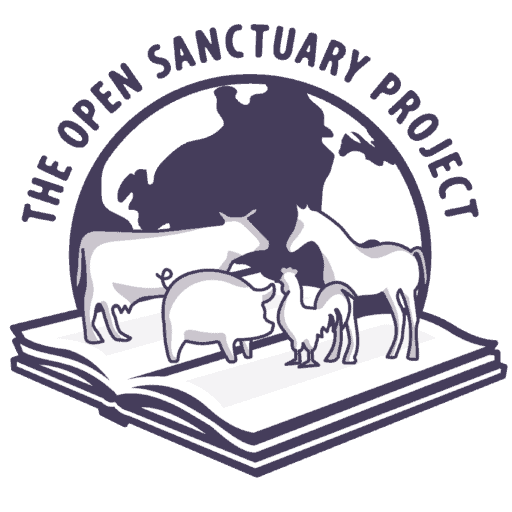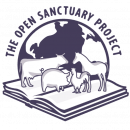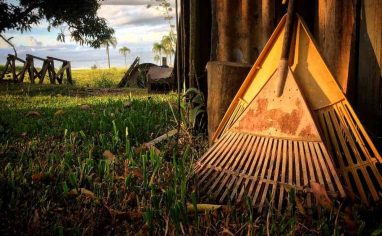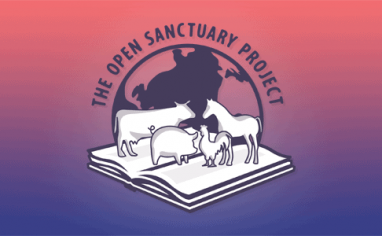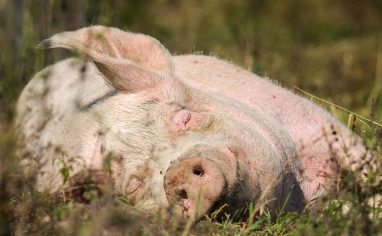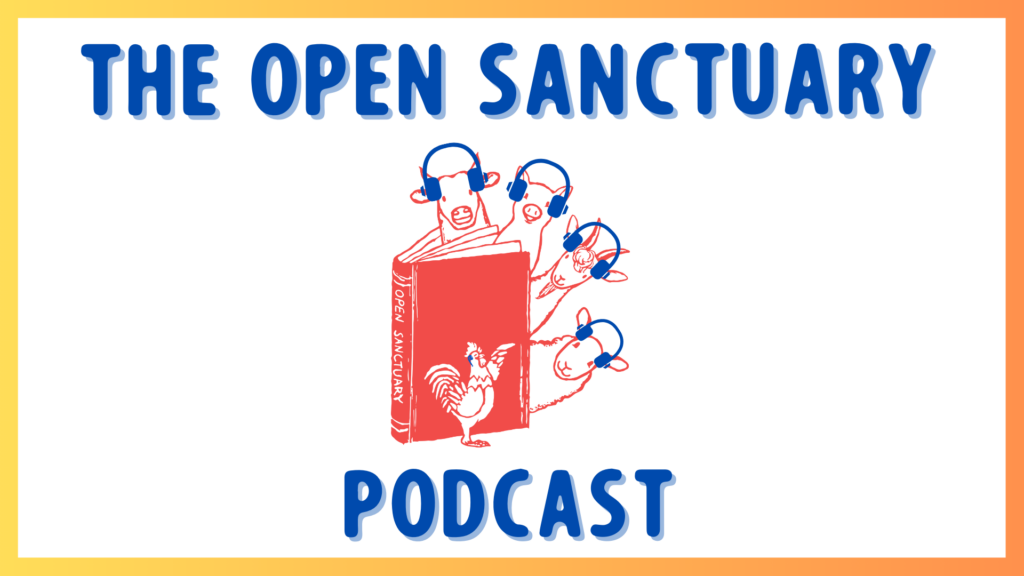
Subscribe To The Open Sanctuary Podcast
If you’d like to get the latest episodes of The Open Sanctuary Podcast, you can subscribe for free on all Podcast platforms, including Apple Podcasts and Spotify!
Episode Notes
Research Specialist Amber Barnes and Senior Advisor Tara Hess discuss the importance of understanding how fresh, lush pastures can affect ruminant, camelid, and equine residents. In this episode, we talk about the joys of spring for residents and care staff but also the potential risks that may come along with the season. We take a peek into potential health concerns, why spring pastures can cause them, and who they may affect. Preventative measures are also discussed!
—
This Episode’s Referenced Open Sanctuary Project Resources:
- Spring Green Pastures: Managing Resident Consumption
- Bloat In Ruminants
- Laminitis In Horses: An Introduction
- Colic In Equines: What You Need To Know
- The Importance Of Veterinary Care At Your Animal Sanctuary
- Advanced Topics In Horse Nutrition: Health Conditions
- Daily Diet, Treats, & Supplements For Donkeys
- Daily Diet, Treats And Supplements For Horses: The Basics
- Daily Diet, Treats, And Supplements For Llamas
- Daily Diet, Treats, And Supplements For Alpacas
- Daily Diet, Treats, & Supplements For Goats
- Daily Diet, Treats, & Supplements For Sheep
- Daily Diet, Treats, & Supplements For Cows
- The Caregiver’s Guide To Developing Your Observation Skills
- Signage To Consider Implementing At Your Animal Sanctuary
- Building Your Resident Emergency Healthcare & First Aid Kit
- The Importance Of Regular Health Checks For Residents At Your Animal Sanctuary
Episode Transcript (Auto-GeneratedThe following content was transcribed through an automated process and may contain transcription errors or misspellings.)
Amber Barnes: Hi everyone. We’re super excited to be back for another OSP podcast. This time we’re going to be talking about spring pastures. So, those of us and all of you out there that have seasons and all of a sudden have really lush green pastures, this is for you. Well, particularly if you are caring for ruminant residents or camelid or equine residents. And I am very excited to have Tara Hess, our senior advisor with us. And I’m Amber Barnes, the research specialist here at OSP. And I’m just kind of excited to get into this topic because it’s really, it’s important. It’s not something that you always think about. You know, often you see the grass and it’s green and it’s just, it’s nice. It’s exciting, right? You’re like, “This must be really great”. And it can be, but also too much too fast can cause problems. So, I’m going to kind of start here with like, so what is the problem with these like beautiful pastures that we’re seeing after, you know, like brown dried things? So, basically it does depend on a number of things to start with with the spring pastures. You end up with new spring grasses and this can also include legumes, right? So, like clover, alfalfa, things like that. And you have your residents, you’re excited to give them access to pasture. But it’s not as simple as that because there’s a lot of sugar and the makeup of it really depends on different things like temperature and even like the resident’s health and also the quality of the soil and all of these different things. So, you’re really going to want to go to the resource we have on this to learn a little bit more and how that affects your sanctuary directly. But for now, basically the problem is you can’t just put residents straight out onto green lush pastures without potentially risking health issues for them. So basically like we’re not going to go super into all of them because there are too many and then Tara and I would just be talking for three hours and I know you love listening to us but maybe not three hours worth, I don’t know. So anyway, you might have issues like colic come up, you know, if somebody ends up out there, you have a horse resident Mandy and you’re like, yes, go graze, have a great time, but it’s too much too fast and then Mandy ends up with colic. So there’s also particular issues for ruminants and to a lesser extent camelids. Tara, what are some of the risks that you can think of to residents?
Tara Hess: So I think there are so many risks which you talked about, you know, we’re not going to get into all of them. And so I think what is important for caregivers to do is to really think to recognize that different species are going to face different risks like you mentioned colic. You know that I don’t know a lot about equines but the one thing I know is that they colic and it seems like everything makes them colic which I laugh but I know colic, it’s awful. Yeah, it’s awful. Whereas like for me I think about lush pastures and I have much more experience caring for ruminants. So I’m like, ah, frothy bloat, like that’s my the first thing that comes to mind for me. Like I don’t think as much about laminitis because I don’t care for equines. And so I think really sitting down and thinking about the species you care for and which health conditions that are related to lush pastures they’re most likely to be at risk of based on the species, but then also thinking about particular individuals. You mentioned grass tetanyTetany is a condition marked by intermittent muscular spasms, caused by malfunction of the parathyroid glands and a consequent deficiency of calcium. and that resource which thankfully I have never encountered, but I also haven’t cared for some of the individuals who I think are most at risk of that. So sort of recognizing those things I think is really helpful because it’s such a big, like there’s so many risks but they don’t all and so many warning signs but they don’t all apply to every species or individual. So for me it’s helpful to sort of think about who am I caring for, what are the potential issues, which ones are most likely to apply to them, recognizing that there’s always going to be some unforeseen thing, like I said, “Oh, I’ve never dealt with grass tetany,” the next time I care for a cowWhile "cow" can be defined to refer exclusively to female cattle, at The Open Sanctuary Project we refer to domesticated cattle of all ages and sexes as "cows." for sure like all of a sudden it’s going to be like, “Oh, grass tetany”. Because then once you know sort of the potential issues, you can really read up about the warning signs so that you can catch issues early and read up about preventative measures so you can take some steps in some cases to prevent certain issues and just sort of be prepared for it.
Amber Barnes: Thank you, Tara. That’s like a lot along the lines that I’ve experienced as well. You have more experience with ruminants. I mean, I do have some experience, but you know, I’ve been focusing a lot on equines and to a lesser extent camelids, but I have the most experience with equines. And as you mentioned, colic, right? You know, like we can’t get into all of these things, but when you think of your resident population, like you said, like this is the first thing to do is think what species are you caring for, right? And then you think of like, who am I caring for as an individual? There are certain species that are more prone to developing certain illnesses or diseases and this can even put them at a higher risk than others that are otherwise just like healthy adults of their species. So you just you have to always think about who’s vulnerable and consider why they’re vulnerable, what makes them vulnerable and that always helps you kind of gear your observations. Tara has written a number of amazing resources just for caretakers or caregivers for observing, like how to observe, and that seems like, “Oh well, you just you just observe,” right? And like, no, these resources go into some really great ways to kind of up your observation game and this is a great place to do that.
Tara Hess: Highlighting the issue of spring lush spring pastures and mentioning observation makes a lot of sense because I think you know this very well, as do I. There are just so many things that can go wrong with an individual and there are so many signs that can present that something is wrong and sometimes maybe caregivers get to the point where you can just be on the lookout for everything, but like our brains can only handle so much. So I think once you sort of recognize some of the issues that are going to be the biggest concern at certain times a year, like obviously some conditions are just they’re not linked to season or things like that. But something like lush pastures and some of the conditions that are related to that, like as a caregiverSomeone who provides daily care, specifically for animal residents at an animal sanctuary, shelter, or rescue., when the grass starts turning green and you get ready to turn your residents out onto pasture, really putting that lens over your observation like, “Oh, this is the time of year that I it’s not the only time of year that residents are going to colic or that they could get frothy bloat or they could get laminitis maybe”. But, you know, you can really be like, “Uh-oh, this is maybe a higher alert like I really have to be on the lookout for these signs right now” in addition to all the other things you’re looking for, obviously. But just sort of, it’s like so easy to just catch anything that’s wrong at any given moment, but sometimes it’s like, or for me at least, if I’m focusing on it and I’m thinking about it, I’m going to be more likely to sort of notice those signs that, “Oh, like somebody looks like their abdomen’s a little extended over there. Uh-oh. Like looking around like, so are you, and so are you,” or somebody’s lame or whatever. And obviously there are 50 million causes for someone to be lame. But you might be like, “Ooh, but they just went out on grass,” or whatever. And again, I don’t do equine, so maybe you’re going to be like, “No, Tara, this is not how we’re going to talk about laminitis”. But you know, you just have this sort of, we’re not vets. We don’t diagnose our residents. But it just can give you a framework to look at all the signs that your residents are presenting at any given time, which is a lot whether you have two residents or like 50. There’s so much to be paying attention to all the time. So, I think the first step is just recognizing that when your residents are going out on pasture, some of the risks they’re exposed to or the conditions they’re at risk of developing might change in terms of what’s going to be a bigger concern. Does that make sense?
Amber Barnes: Absolutely. It does. And it makes me think of other things to consider, like we mentioned there’s a lot of factors, but like, you know, what was your winter like, because what winter was like is going to affect also what your pastures are like in the spring and the mineral content and all these things in the soil. So, you know, we would definitely recommend contacting or having your soil tested first of all, you know, too, and having your, you know, forage and all this. And in addition to that, I’m just kind of, most of us aren’t able to do that, but like are able to harvest their own hay, which is, you know, grasses, which is really great, but it’s like that’s also something to think about. And I’m just throwing this out there because, you know, how those are cut and it’s a little different, you know, because they’re going to be dried more, but still there’s a difference in moisture between older hay that’s still, that’s, you know, still perfectly good for residents to eat, but that in the really fresh stuff. And so just considering that as well when you’re thinking of diets. And as well, or on top of that, the other thing I wanted to mention is, okay, so we have pastures and sometimes humans we go out and we cut the pastures a little bit. Like there’s different techniques, different people do different things. If you do that, if you go and cut a bunch of grass, do not go and feed the grass clippings. Don’t like toss those over to the, you know, over the fence for your residents. I know because, you know, of my own experience like particularly equine residents, that’s, yeah, that’s going to be bad. It’s going to ferment in the gut and you’re going to end up with a bad case of colic. So, and this can also happen to, you know, to like ruminants and camelids as well. But yeah, I just wanted to mention that because that actually is something that comes up a lot and I’ve gotten a number of questions about, you know, like, “Oh, well, can I?” because it seems so great, right? It’s this fresh, once again, lush grass and you just think, “Oh my gosh, this looks like if I were a horse”. Have you ever thought that? I’m just being like, “Yeah, if I was a horse, that’d be some really tasty grass”.
Tara Hess: I think so. I know. I know. It’s like I think that’s, you know, when the grass starts growing, whether you’re like cutting it or you’re, you know, it’s just still attached to the ground out in the pasture, it’s like I look at that dry hay, even if it’s like really nice hay, like compared to the grass and like how happy everyone is when you let them out on pasture and they’re running around and and like yes, it’s everything else that comes with spring like winter’s finally over, but it’s like such a big part of me wants to just like open up the gate and be like, “Have at it! No more hay for you at all, eat all the grass,” you know, until you realize like, “Oh, that’s not actually what you what you should do”. And especially then you also factor in like hay is expensive. But once you have all that food out on the pasture that is, you know, free, sure, you probably put like some investment into your pasture, but like right now it’s free. You’re not buying like bales of hay. Like let’s stop feeding all hay and just put them out on grass. But like in a lot of cases, that’s not actually what you want to do if you’re going to really be careful about preventing these issues.
Amber Barnes: Right. Absolutely. I have definitely felt that way. And you just, you know, you want them to have that like joy and you know how exciting it is like when it’s your birthday or something or maybe not everybody loves their birthday, but you know, when you get like cake or something and you’re just like, “Yeah, it’s my birthday,” and I just really want to indulge here and I want them to indulge, right? You know, I want them to have a really fun experience because that’s exciting to be like, “Oh yeah, we’re changing it up now we have the lush spring grass”. But at the same time like all that cake might end up for me, a belly ache, but it could be more serious for them, you know, running around and and really eating it all up. So, that isn’t to say though that they shouldn’t have any of this, and in fact, we can kind of move into identifying some ways to prevent that, which also allows them to still have access. I would say most residents that we’re talking about, there are individuals, there are certain health issues that make it so that it’s really not a good idea for them to be on a lush pasture at all. Unfortunately, that looks like Cushing’s for equines, like equine metabolic disorders. And those are some things to consider too. And you know, as always, talk to your vet about this with everyone, like, “Hey, is it okay if Joey does this?” or, “You know, is that something that I need to look out for?” and make different arrangements for them. So, yeah. So, once you’ve considered everyone, as you know the species as a whole and then as an individual, how can we go about preventing all these issues while still letting them have some really tasty grass? But one thing to do is to feed the residents the boring dry hay before giving them access to lush pastures. I mean they’ll enjoy their hay too, generally speaking, but that means their bellies are fuller and that means when you let them out then they can eat and it’ll be good, but they’re not going to completely gorge, you know, as much as they would if they went out there on empty stomachs. So, that’s number one. And that’s for everyone, you know, that’s for any ruminant, camelid, equine. And also, you can just, this one’s harder in my experience, but if you can provide pasture access for a shorter amount of time and then slowly add that time as grass matures and also their microbiome kind of adjusts to the lushness, the different amounts of sugar and the structure, and there’s a whole thing about just grass and what it’s made of and at different times of the day and all of these things. So, it can get pretty technical there too. But basically, if you can give them a little bit and then bring them back in, but you are going to deal with individuals that are going to be like, “Are you serious?” Like, “Look at this. I don’t want to.” Yeah. I feel like the hay and this almost go hand in hand. Or maybe if you do them hand in hand, it makes it easier because I, yeah.
Tara Hess: I’ve let sheep, cowsWhile "cows" can be defined to refer exclusively to female cattle, at The Open Sanctuary Project we refer to domesticated cattle of all ages and sexes as "cows.", goats, again, not equines, out onto a pasture with the idea of like, “Oh, we’ll start with one to two hours and then pull them in”. And it’s like, good luck with that. Like that’s not going to happen. And if it does happen, it’s going to feel bad. Like, it’s just not going to be fun and it’s probably going to be hard and it’s just not going to be a great solution. But if you maybe consider feeding the hay first, like that’s going to take up some of the time in the morning. And then also, you know, I can only speak to the residents that I’ve cared for, but everybody seems to have a routine. And it worked out that some of the sheep in particular and actually the cows and goats that I cared for seem to have this routine where they would come in in the middle of the day and that’s when they would come inside and relax. So if you take what you know about their sort of natural routines that they already have, and that’s not to say that for sure no one’s going to stay out in the pasture, but sort of trying to work around what they already do. So like maybe feed them hay in the morning for a couple hours and do some enrichment and let them out and hope that they’re still going to come in around afternoon when they usually do when it’s like the hottest part of the day. Like trying something like that out, I think, is a little bit easier and sounds more appealing to me than like, “Okay, everybody’s happy on the pasture now. I’m going to go out there and I’m going to tell them they have to come in,” you know, like they’re not going to want to do that. So, I think it’s tricky. It’s a tricky one, but if you look at what your residents do and what they like and how they spend their time, like you might be able to figure out something that feels less forced.
Amber Barnes: Yeah. Well, and along those lines too is it’ll help you, you know, build stronger bonds and also it’s an opportunity for you to kind of learn how the other works in a way and you know what’s kind of being expected in a situation just working around meeting them where they’re at, right? So like kind of setting up situations for success like, “Oh, I know they generally come around this time”. So like trying to set your day a little bit around that when you can. Like you said, like I think that’s a great idea. Everyone’s happier, you know, in that situation which goes on to a positive experience, you know, is remembered and a negative experience is remembered. So whenever we can make it positive or neutral even then, you know, neutral being like, “Oh, they kind of came in on their own and you just kind of shut the gate behind them and everything’s great,” you know, or if they’re just using like positive reinforcement or enrichment or something to entice them. So they they come back. But usually that would involve food. That’s usually a high motivator. We might not want to do that here. So that’s what I was like. I was like, yeah. So, and then that that if it’s that good, you know, then it’s going to be full of sugar. So, that kind of defeats the purpose there. Also, for different species, there’s different times of day that you can let them out that would make more. And so the difference is when the sugars are most available in the grass and moisture makes a big deal as well. We were talking earlier about for equines if you can keep them off the pasture midday. Give them access in the morning hours or at dusk. That kind of avoids when the sugars are at their highest. And that and for horses like that sugar is a big, that’s a big factor that can affect them, but also for ruminants, this is different. So how is that how is that different, Tara?
Tara Hess: Yeah. So I’ve been lucky that I haven’t had an issue with morning pastures with ruminants. But if you read about frothy bloat, you know, one of the concerns is wet pastures. And so then if you have morning dew on those pastures making them wet that can increase the risk of frothy bloat. And so some recommendations are like, well, don’t put them out in the morning, you know, put them out a little later when the pastures have dried up a little bit. So I feel like if someone was going to come to us with like, “Oh, like I didn’t even know lush pastures were a problem. What should I do?” I think the first thing folks should do is talk to their vet. You know, talk to their vet who can be like, “You know, here’s the concern for these species and these species”. And then they can even speak more specifically about the individuals you care for. You know, like if you have if you just rescued a couple lactating cows, they can be like, “Hey, like now we need to start thinking about some other health issues for these particular individuals and maybe there are some additional preventative measures,” but I feel like a good vet is going to be your best source of information. And then we also, I know we’re going to link to these in the show notes, but for folks who want more information about some of the health conditions that we mentioned, and again, we didn’t mention all of the concerns that can come with lush pastures, but Amber does a great job of mentioning them in her resource. So, in addition to looking at that resource, we do have a few vet-reviewed resources about some of these conditions. So, we’ve got one on laminitis, we’ve got one on colic, we’ve got one on bloat that includes frothy bloat in there. That’s not the only kind of bloat, but that’s the one you worry about with pastures. And so, that’s like a great way for folks to get more information. And I hope that they find it useful, but really I think your veterinarian, especially if they’re coming out and doing on-site visits, they have a good sense of like what your pastures look like and maybe what your practices are and some of the health issues that are going on with your residents. So, they can really give you tailored recommendations about what makes the most sense. And then the other thing that I feel like is really important is when you’re having that conversation with your veterinarian is also to make sure of course you’re going to do everything you can to prevent these health issues. But some of them if they happen, they really require a prompt response. My limited understanding of colic is like that is not something you wait on if somebody is showing signs of colic. And for sure if somebody’s showing signs of bloat, that’s not a “I’ll just wait and see if this gets better”. You know, this is a call to your veterinarian. And so making sure you have a conversation with your veterinarian about the supplies you should have on hand in case they are like, “What you’re describing to me requires action now, and I’m going to talk you through some things to do while I’m on my way to you or while you’re getting somebody to the vet” so that you’re prepared to provide any immediate treatments. That might like a bloat remedy, something like that for ruminants is helpful to have on hand under your veterinarian’s recommendation and used under their guidance.
Amber Barnes: Yeah. Kind of on that note as well is acting quickly, looking for signs, observing any signs of concern. On the scale of health issues, I wouldn’t necessarily call this an issue, but I just want to show that there is a range. There are certain things that you absolutely need to move on right away like Tara mentioned, but also like if you see someone with some loose stools after being, you know, newly introduced to pastures, that’s not necessarily a reason to panic. That’s they’re just they’re ingesting really rich, you know, food at that moment and it can cause loose stools. But it is something then to keep an eye on. And also, of course, whenever you notice one symptom, it’s good to do a health checkThe Open Sanctuary Project uses the term "health check" to describe health evaluations performed by caregivers who are not licensed veterinarians. While regular health checks are an important part of animal care, they are not meant to be a replacement for a physical exam performed by a licensed veterinarian. to make sure there’s nothing else going on so you also don’t overlook something. It’s not always a panic thing, but it is something you want. I would say like the presence of loose stools is actually really helpful in identifying kind of like, okay, so we can see that this is, you know, like this is affecting some of their digestion and you can kind of follow that individually as well for each individual. Like, how are they doing, you know? Like if you see it, then you also have an idea how it’s kind of affecting them internally. And one thing I wanted to mention earlier but completely forgot, which I think would be great with this and other seasonal things is one thing that’s also really helpful to bring it to the front of your mind is if you have a, you know, if it’s not just you or one other person or something, if you have a big care staff or volunteer care, having a sign up, having a sign up in these areas, it’s like, remember to look for, it’s spring, here are some things to look for with lush pasture. So just because then it just kind of puts it in your a little bit more. You know, we know what it’s like. You start your day and you’re moving. So, it can be hard to always flip a switch, right? And so, just, you know, if that’s something that would be helpful for you or to help communicate to all the volunteers and your team of things to look out for, just, you know, also have a little sign in their areas where it’s just like, “Hey, this can be an issue around this time of year, so look for this”. And the same thing with like in winter, there’s a number of things that you could say, summer. Like, “Oh, don’t get Tara started”. Like,
Tara Hess: Yeah, don’t get me started on winter. Winter’s awful. Yeah. But yeah, that’s a great point. And I think, you know, my experience as a caregiver, we had regular meetings where we talked about different things, which was helpful. So, I think if that’s, and maybe it’s not even in-person meetings for certain teams because I know sometimes it’s hard to coordinate schedules, but I think whatever your communication method is to communicate about residents or the happenings at the sanctuary like before the grass turns green. Maybe doing for some folks it might be a little refresher, but if you have new volunteers or new staff, like you might have lost sight of the fact that they don’t know maybe that this risk even exists because you forget that it was such a long winter you forgot they’ve never seen a spring at your sanctuary and they don’t know. So just using any opportunity you have to make sure, you know, everybody who’s responsible for watching the residents, you know, caring for them, recognizes some of the signs or knows that it’s a risk because the more eyes you have on these individuals, the better because you could go out and check everybody and they’re fine. And then I think we’ve both been there maybe where you’re like, “I looked at them this morning and they were perfectly fine and now something totally different is going on,” because, you know, anything can happen. So yeah, making sure everybody just is on the same page.
Amber Barnes: That’s a great point because there’s a lot of people that can in a number of sanctuaries that, you know, come in and out of the staff or the volunteer group. You got a lot going on and so it might not even occur to you that, “Oh wait, who’s here and who’s not and who’s new”. And so just if you have it set up ahead of time where you have like a, you know, kind of seasonal before it’s there, you know, meeting to cover things that affect you in those seasons. And in this case, like, you know, spring pastures is a big one that, yeah, then that could be also a preventative measure for this and many other seasonally related potential challenges. Well, I think that’s I think that’s a wrap. I mean, I hope that you are all having a wonderful spring and so are your residents. I’m sure Tara agrees. Thank you for joining us and we look forward to another podcast here in another week or two. And remember, you know, we will have a lot of the links to our different resources that we talked about in the show notes, so check those out.

Got A Podcast Idea? Contact Us!
If you have a topic or question you’d love to hear our staff address on The Open Sanctuary Podcast, please get in touch via our contact form!
